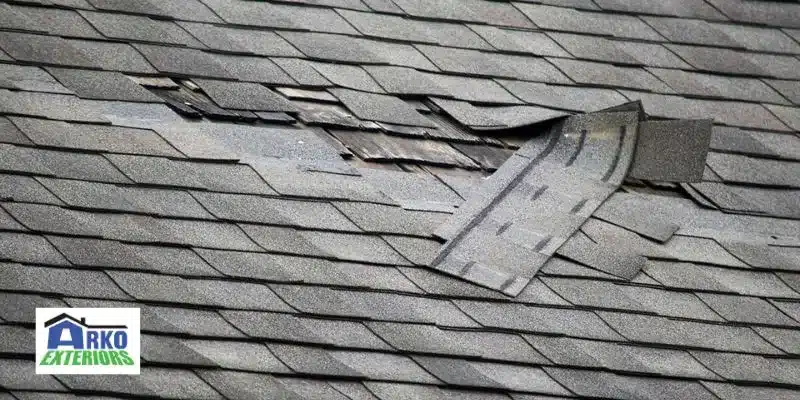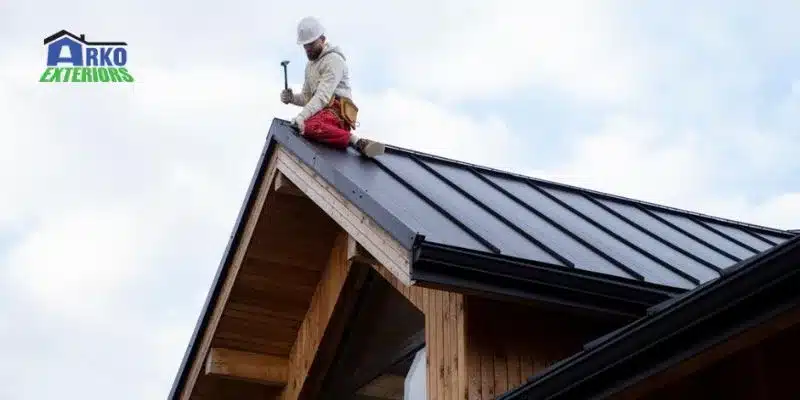Maintaining a sturdy, leak-free roof is essential for the integrity of any structure. Whether you’re a homeowner or a property manager, understanding the basics of roof repair can save you time, money, and headaches in the long run. In this guide, we’ll explore some expert tips and techniques for effective roof repair.
Assessing the Damage
Before you embark on any repair project, it’s crucial to assess the extent of the damage. Here are some key steps to follow:
- Visual Inspection: Start by visually inspecting your roof for any signs of damage such as missing shingles, cracked tiles, or sagging areas.
- Interior Inspection: Check the interior of your home for water stains on ceilings and walls, which could indicate roof leaks.
- Attic Examination: Inspect the attic for signs of water infiltration, such as damp insulation or mold growth.
- Professional Inspection: If you’re unsure about the extent of the damage or the best course of action, consider hiring a professional roofing contractor for a thorough inspection.
Common Roofing Problems and Solutions

Roofs can suffer from a variety of issues, each requiring specific roof repair techniques. Here are some common problems and their solutions:
- Leaking Roofs: Leaks are often caused by damaged or missing shingles, deteriorated flashing, or cracked seals around vent pipes. To fix a leaky roof, identify the source of the leak and replace or repair the damaged components.
- Damaged Shingles: High winds, hailstorms, and aging can damage shingles and lead to cracking, curling, or buckling up. Replace damaged shingles promptly to prevent water infiltration and further damage to the roof structure.
- Flashing Problems: Flashing is the thin metal strip installed around roof penetrations such as chimneys, skylights, and vents to prevent water intrusion. Inspect flashing regularly for signs of corrosion or damage, and repair or replace as needed.
- Clogged Gutters: Clogged gutters can lead to water backup, which can damage the roof and fascia. Clean gutters and downspouts regularly to ensure proper drainage and prevent water from pooling on the roof.
- Tree Damage: Overhanging tree branches can rub against the roof and cause abrasion or puncture holes in shingles. Trim back branches to prevent damage and reduce the risk of fallen debris during storms.
DIY vs. Professional Repairs
While some minor roof repairs can be tackled as DIY projects, complex issues or extensive damage may require the expertise of a professional roofer. Consider the following factors when deciding whether to DIY or hire a professional:
- Skill Level: Assess your comfort level and experience with roofing repairs. If you’re inexperienced or uncomfortable working at heights, it’s best to leave complex repairs to the professionals.
- Safety Concerns: Roofing work can be dangerous, especially without the proper safety equipment and training. Hiring a professional roofer ensures the job is done safely and efficiently.
- Warranty Considerations: Many roofing materials come with warranties that may be voided if repairs are not performed by a certified installer. Hiring a professional ensures that your warranty remains intact.
Essential Tools and Materials
Having the right tools and materials on hand is crucial for a successful roof repair project. Here’s a list of essentials:
- Safety Gear: Invest in sturdy work gloves, safety goggles, and non-slip footwear to protect yourself from injury while working on the roof.
Roofing Materials: Stock up on replacement shingles, flashing, roofing cement, and sealant to tackle common repair tasks. - Ladder: Use a sturdy, properly positioned ladder to access the roof safely. Ensure the ladder is tall enough to reach the roof edge without overreaching.
- Roofing Nails and Hammer: Keep a supply of roofing nails and a hammer handy for securing shingles and flashing.
- Roofing Caulk and Sealant: Use roofing caulk and sealant to fill gaps around flashing, vents, and other penetrations to prevent water infiltration.
Crucial Aspect Of Roof Longevity
In addition to the fundamentals of roof repair, several other crucial aspects can contribute to the longevity and functionality of your roof:
1. Preventive Maintenance
Regular roof maintenance can help identify potential issues before they escalate into major problems. Schedule annual inspections to assess the condition of your roof and address any minor issues promptly. Preventive measures such as keeping the gutters clean by removing thick debris, and trimming overhanging branches can also help prevent damage and prolong the life of your roof.
2. Weather Considerations
Weather conditions play a significant role in the health of your roof. Extreme temperatures, heavy rainfall, snow, ice, and strong winds can all take a toll on roofing materials over time. Keep an eye on the weather forecast and take preventive measures, such as reinforcing vulnerable areas and clearing snow accumulation, to minimize potential damage during inclement weather.
3. Proper Ventilation
Proper attic ventilation is essential for maintaining a healthy roof system. Inadequate ventilation can lead to moisture buildup, which can cause mold growth, wood rot, and premature deterioration of roofing materials. Ensure that your attic is adequately ventilated to allow for the free flow of air, which helps regulate temperature and humidity levels and extends the life of your roof.
4. Quality Installation
The quality of installation significantly impacts the performance and longevity of your roof. Whether you’re installing a new roof or repairing an existing one, choose a reputable roofing contractor with a track record of quality workmanship. Ensure that proper installation techniques and industry best practices are followed to maximize the lifespan of your roof and minimize the risk of future problems.
5. Roofing Material Selection
Selecting the right roofing materials for your climate, budget, and aesthetic preferences is crucial. Consider factors such as durability, longevity, energy efficiency, and maintenance requirements when choosing roofing materials. Whether you opt for asphalt shingles, metal roofing, tile, or slate, prioritize quality materials that offer superior protection and long-term value for your investment.
6. Insurance Coverage
Review your homeowner’s insurance policy to understand what roof-related damages are covered and any exclusions that may apply. Keep detailed records of roof repairs, maintenance, and inspections, as this information may be valuable when filing insurance claims. Consider purchasing additional coverage or riders to ensure adequate protection against unforeseen events such as storm damage or roof leaks.
7. Environmental Impact
Incorporating eco-friendly roofing solutions can help reduce your environmental footprint and lower energy costs. Explore sustainable roofing options such as cool roofs, which reflect sunlight and reduce heat absorption, or recycled roofing materials made from reclaimed or renewable resources. Green roofing initiatives such as rainwater harvesting and rooftop gardens can also contribute to environmental conservation and enhance the energy efficiency of your home.
Conclusion
Regular roof maintenance and timely repairs are essential for prolonging the lifespan of your roof and protecting your home from water damage and other issues. By following the tips and techniques outlined in this guide, you can address common roofing problems effectively and maintain a sturdy, leak-free roof for years to come. Remember, when in doubt, consult with a professional roofing contractor to ensure the safety and integrity of your roof.

